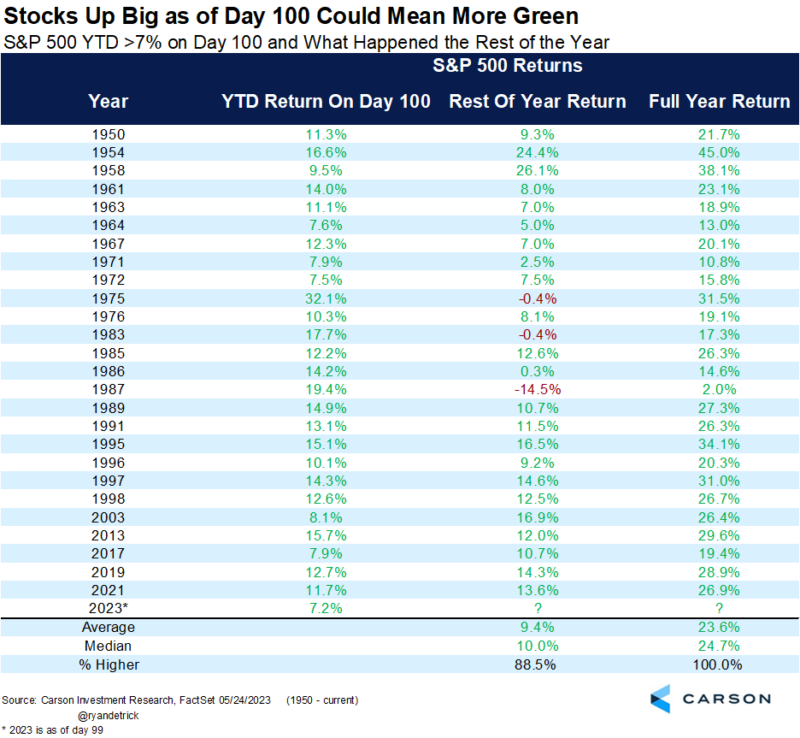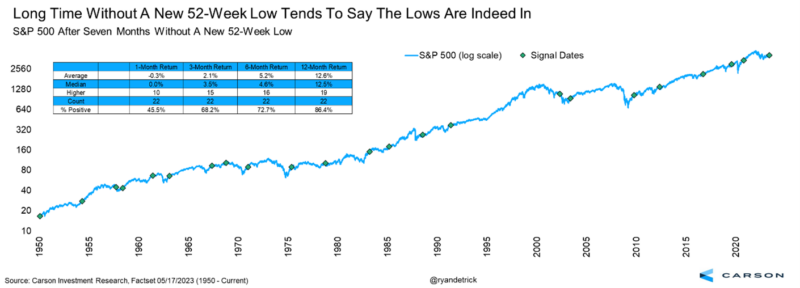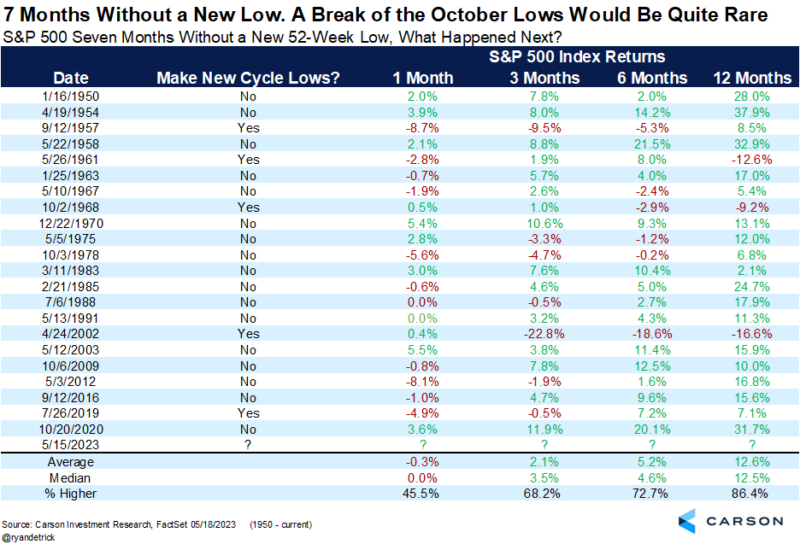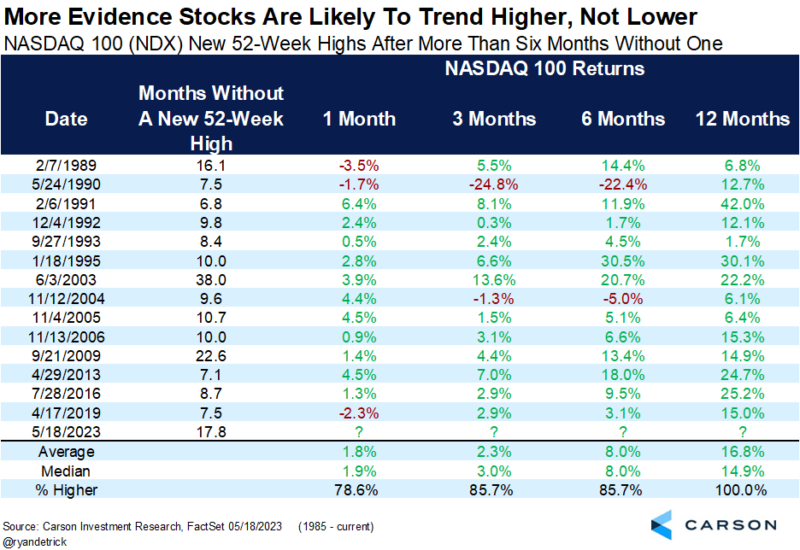“It’s not how you start the season, it’s how you finish.” -Albert Pujols, 11-time All Star professional baseball player
Can you believe it, today is the 100th trading day of the year. In the face of mounting worries about the economy, Fed policy, stubborn inflation, an earnings recession, the manufacturing recession, the war in Ukraine, poor market breadth, signing Joe Burrow to a long-term NFL deal, and more, stocks have had a really strong start to 2023. Ok, that Joe Burrow part is more of a personal worry, but the man needs to be paid and we need to keep him in Bengal stripes, so it is a worry of mine in 2023.
So, what exactly does a good start to a year as of Day 100 mean? Well, the 7.2% gain as of yesterday would be the best start to a year since 2021 with 2019 and 2017 before that. In other words, recently strong starts have meant continued gains for the bulls out there who recall those fun years.
Looking at all the years to gain at least 7% by Day 100 showed that the rest of the year was higher by 9.4% on average and up 88.5% of the time. Anyone up for another 10% from here? Unless you are a permabear, I bet most readers would be ok with that. Lastly, the full year has never closed the year lower when up more than 7% on Day 100. Yes, 1987 is in here, so we know that stocks can indeed go lower from here, but to have a red year in 2023 would truly be rare.
That isn’t the only good news though. In fact, here are two more recent occurrences that should bode well for continued strong returns from stocks this year.

Stay on Top of Market Trends
The Carson Investment Research newsletter offers up-to-date market news, analysis and insights. Subscribe today!
"*" indicates required fields
First up, the S&P 500 hasn’t made a new 52-week low since the mid-October lows last year. That is more than seven months without a new low and history would say that a move right back beneath those October lows would be quite rare. As you can see from the chart below, usually this is a sign that ‘the lows’ indeed are in and in many cases strong continued gains were possible.
Here are all the instances of a new 52-week low and then seven months in a row without a new low. A year later? Stocks were up 12.6% on average and higher 86.4% of the time. Looking at things over the past 50 years and only twice (out of 14 times) did stocks go on to make new lows after seven months without a new 52-week low. Those were in 2002 (and the vicious three-year bubble bursting bear market) and then right ahead of a 100-year pandemic. Let’s hope now isn’t like those two and we don’t think it is. The other 12 times the lows were indeed in place. We remain in the camp that the lows from October are it and the bear market ended then. We’ve been saying that since late last year and many more are coming around to this opinion now. This study does little to change our views here.
Lastly, we’ve seen strong leadership from large cap technology this year, after a horrible year last year it should be noted. This is the lifeblood of bull markets, changing leadership and we have seen it this year. Turning to the NASDAQ-100, it recently made a new 52-week high for the first time since before Thanksgiving in 2021 …. Nearly 18 full months! As bad as that was, the good news is when it goes at least six months without a new 52-week high and finally makes one (like last week), the future returns can be quite strong. As we show below, the NASDAQ-100 was higher a year later 14 out of 14 times and up 16.8% on average along the way. We don’t expect this to be 14 out of 15 this time next year is all I will say.
With all of that, I must ask you, why are you even reading this right now? We are right before a holiday weekend and I hope you can get a break, eat some good food, and spend time with family and friends this Memorial Day weekend. The stock market is having a nice year, bonds are doing ok, or at least way better than last year, the economy is firming, the Fed is likely done hiking, and the Bengals are inching closer to signing Joey B. Have a great weekend, everyone!






